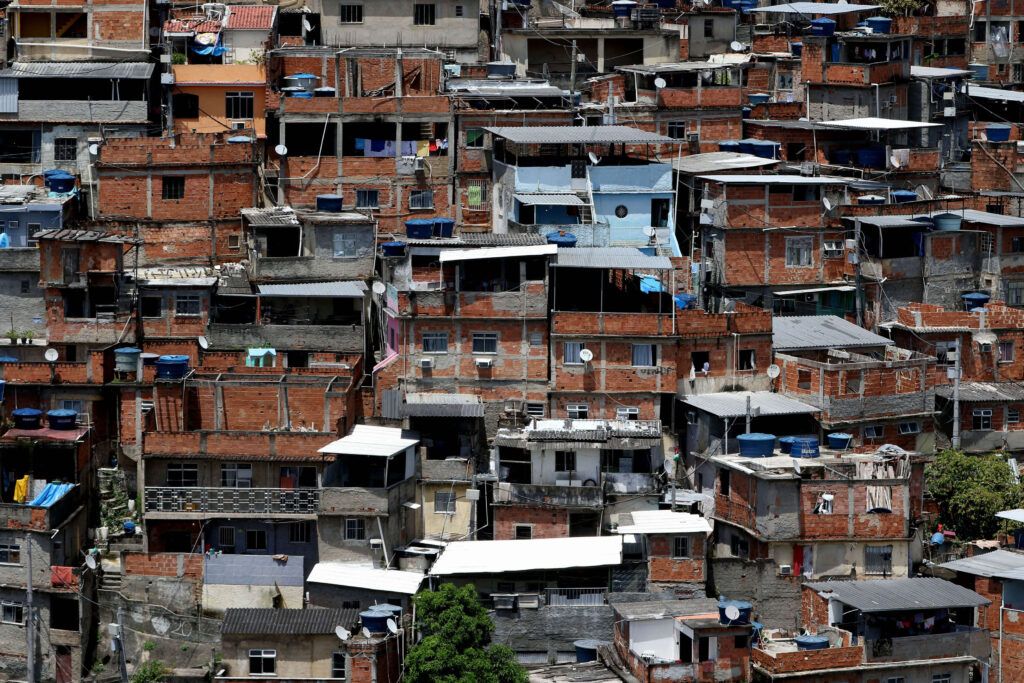How social programs and employment drove poverty in Brazil to its lowest rate ever recorded
In 2023, Brazil reached a historic milestone in its fight against poverty, reducing the rates of poverty and extreme poverty to the lowest levels since 2012, when the Brazilian Institute of Geography and Statistics (IBGE) began conducting annual surveys on the subject.
Data released by the IBGE last week revealed a significant improvement: from 2022 to 2023, the percentage of Brazilians living below the World Bank’s poverty line – defined as a monthly per capita household income under USD $110 – fell from 31.6% to 27.4%.
This marks the lowest rate ever recorded. In absolute terms, the number of people living in poverty declined from 67.7 million to 59 million, meaning 8.7 million individuals rose above the poverty line in just one year.
Similarly, the proportion of people living in extreme poverty – earning less than USD $35 per month – dropped from 5.9% to 4.4%. This is the lowest level since 2012, and the first time the rate has fallen below 5%. In numerical terms, this represents 3.1 million fewer people in extreme poverty: from 12.6 million in 2022 to 9.5 million in 2023.
Experts and IBGE researchers have attributed this progress to two primary factors: the expansion of social assistance programs, such as Bolsa Família, targeting those in extreme poverty, and improvements in employment levels, which have benefited those living below the poverty line.

(Tânia Rêgo/Agência Brasil)
The role of Bolsa Família
Bolsa Família, a flagship program from President Luiz Inácio Lula da Silva that was first established in 2003, currently provides support to over 20.7 million Brazilian households. The program – a version of which was continued during the administration of Jair Bolsonaro under the name Auxílio Brasil – offers financial assistance tailored to family needs, such as the number of children, with an average monthly payment of BRL 684.27 (USD $113).
Pedro Fernando Nery, a prominent economist and legislative consultant for Brazil’s Federal Senate, emphasized the critical role of Bolsa Família in lifting millions out of poverty. In an interview with Brazil Reports, Nery, who authored the book Extremos – Um Mapa para Entender as Desigualdades no Brasil (Extremes – A Map to Understand Inequalities in Brazil), noted:

“In five years, six million Brazilians have escaped extreme poverty, even amid the negative impacts of the pandemic. Nobody would have imagined this in 2019, at the end of a decade marked by stagnation in the fight against poverty and extreme poverty. The extreme poverty rate in Brazil has fallen by 40% since the pre-pandemic period. The combination of a robust labor market and the significant expansion of Bolsa Família after the emergency aid programs is key to this progress.”
Economist Raul Krauser added that Bolsa Família has an economic multiplier effect, especially in vulnerable communities. Speaking to Brazil Reports, Krauser explained that funds from the program tend to circulate locally, particularly among small businesses, creating jobs and generating income.
“When you enhance people’s purchasing power, you stimulate the local economy. This triggers a range of services, activities, and initiatives, driving job creation and poverty reduction,” Krauser said.

Brazil’s labor market has also shown notable improvement. Data from the IBGE released in late November indicated that the country’s unemployment rate had dropped to 6.2%, the lowest level since the beginning of the historical series in 2012.
Krauser explained that social programs and job creation often reinforce each other.
“It’s a self-reinforcing cycle. Expanding social transfer programs stimulates local economies, generating jobs and reducing unemployment. In turn, increased employment levels significantly reduce poverty and extreme poverty,” Krauser said.
Challenges ahead
Despite the positive developments, experts caution that Brazil still faces significant challenges in addressing inequality.
“Brazil lags behind its Southern Cone neighbors in poverty and extreme poverty indicators,” Nery said. “Our poverty rate is five times higher than Chile’s and four times higher than Uruguay’s. The percentage of people living in extreme poverty is triple that of Paraguay or Argentina.
There’s still considerable waste in public spending, and progress in strategic areas, such as early childhood development, remains slow. We need a serious national policy to tackle poverty comprehensively,” he added.
For those who have recently escaped poverty, continued social mobility will depend on additional measures. Krauser stressed the importance of professional training and education to sustain long-term progress.
“To empower vulnerable populations, we must advance education and skill-building initiatives. With the rapid changes brought by automation and artificial intelligence, the labor market will face profound transformations. Preparing for these shifts is essential,” Krauser said.



